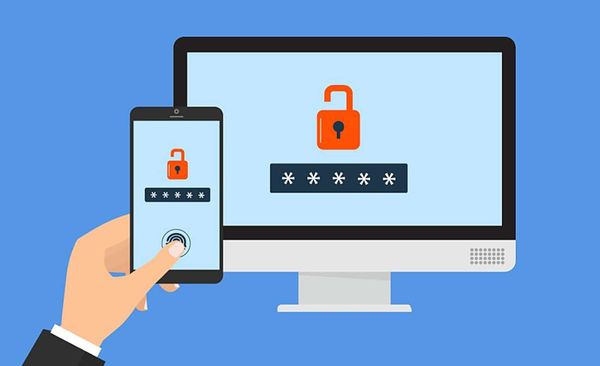
Cyber security chip
Cyberattacks Are a Costly Business
Cyberattacks are a serious financial threat
Cyberattacks are increasing in scale and cost every year. It’s estimated that by 2021 the annual global cost of cybercrime will be a mind-boggling $6 trillion. And the COVID-19 pandemic isn’t helping. According to the FBI, cyberattacks jumped by 800% during the international crisis.
So, with criminals lurking around every corner online, how do you prevent falling victim to digital scams? Let’s take a look at the most costly attacks, review some popular attack methods, and learn how to safeguard yourself from hackers.
The biggest cybersecurity attacks
Cyberattacks are some of the biggest threats to businesses and institutions. The financial cost, reputational damage, and potential fines can be fatal. In fact, 60% of small and medium-sized companies go out of business within six months of getting hacked. Here are some of the worst breaches to have hit companies this year:
- In what you could call the most high-profile hack of the year, criminals targeted numerous prominent accounts on the social media platform. Victims included Elon Musk, Barack Obama, Bill Gates, Joe Biden, and many more. After the attack, Twitter’s shares dropped by 4%, wiping off about $1.3 billion in market value.
- The video conferencing app, which gained enormous popularity during the pandemic, suffered a breach that exposed more than half a million accounts. The leaked information included logins, meeting URLs, and HostKeys. Among the victims were financial institutions, colleges, and other big organizations.
- In March 2020, the hotel chain disclosed a breach that had affected 5.2 million guests. The exposed personal data included names, birthdates, phone numbers, and travel information. Two years before the incident, Marriot suffered another hack, in which nearly 500 million guests were affected.
- The gaming platform revealed that 160,000 accounts had been compromised in a cyberattack. Criminals used victims’ credentials to buy digital products on Nintendo’s platform.
These attacks are just the tip of the iceberg. In the first half of 2020, a staggering 27 billion records got exposed in data breaches. How do these attacks happen?
Most popular attack methods
Phishing.
Phishing is one of the most widespread cyberattack methods, contributing to 32% of all data breaches. In a phishing attack, the hacker uses social engineering, fake messages, or websites to lure information or money out of the victims. Anyone can become a target of a phishing attack, whether it’s a big corporation or a regular internet user.
These types of attacks became wildly popular during the pandemic. Criminals were impersonating officials from the World Health Organization to draw sensitive information out of their targets.
Malware.
One wrong click, and a device gets infected with malicious software, ranging from annoying pop-up ads to a keylogger that records every keystroke on the victim’s machine. It can provide criminals with unauthorized access to confidential information like logins, passwords, or financial data. Nearly a third of all data breaches involve malware.
Ransomware.
Ransomware is particularly dangerous since it can spread very quickly. Usually, ransomware attacks involve malware that locks the targets out of their devices, encrypting their data. To get access to sensitive information again, the victim has to pay a ransom.
DDoS.
Distributed-denial-of-service attacks are some of the most common cyberattacks out there. While they rarely result in exposed sensitive data, they can still cripple a business for a while. DDoS attacks overflow a website with enormous traffic, causing the website to deny any legitimate traffic from real customers.
Unfortunately, most of the security of your personal data comes down to the security of the companies holding it. However, this doesn’t mean that there’s nothing you can do to improve your digital safety. Here’s how to safeguard yourself from criminals online.
Keeping yourself safe
Update Your Software.
Make sure all your devices are running on the latest software version. Software updates contain not only neat new features, but also crucial vulnerability patches.
Use a VPN.
A virtual private network encrypts your traffic so no criminals can eavesdrop on your online activities. When picking a VPN service, don’t forget to choose a reputable provider. NordVPN is a good example.Tech sites that give NordVPN reviews regularly rate the app as one of the most secure, fast, and trustworthy VPNs in the industry.
Use secure passwords.
Password security is critical, so use complicated, long alphanumeric passwords and never use the same one twice. If you find it difficult to keep track of your logins, try using a password manager.
Don’t click on unknown links.
If you get an email pushing you to change your password or provide some personal information, take a breather before clicking on the link. You may end up infecting your device with malware.
Don’t download unfamiliar software.
Do your research before downloading a new app, especially if it’s free. Also, avoid downloading anything from third-party app stores. Since they don’t go through criteria as rigorous as in official app stores, they’re more likely to contain malware.


